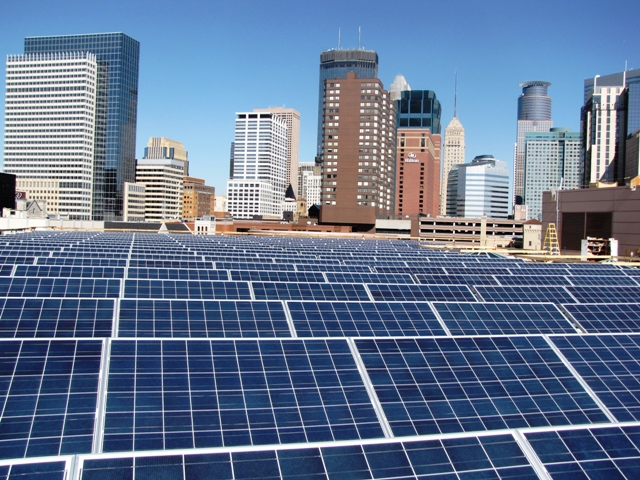My Uncle Dave Wakefield lives in Anchorage, Alaska in a tiny house developed when performance suggested minimal building and construction expense as well as square footage.
Your house, which he’s lived in the past two decades, has transformed little since its building and construction at some point prior to or during World War II. It has 2-by-4 walls, reduced ceilings, little areas as well as a draftiness regular with old residences constructed by property owners that made use of whatever was existing around. In this case, it probably meant surplus wood from close-by Elmendorf Air Force Base.
When I called Dave lately, he shared joy that the winter temperature level had lastly climbed. “The high was 4 levels today, as well as it really feels practically tropical,” he claimed.
Showing up the heat
Tropical is a loved one. Dave claimed deep cold banged them hard the week previously.
Dave keeps the furnace cranked. Yet due to the fact that a lot of the warmth leakages with the attic, wall surfaces, and also windows, substantial icicles develop, appearing like clear, pristine stalactites. Barely power effective.
Actually, his house is eco-friendly
The structure goes eco-friendly.
Construction methods certainly have actually changed because Dave’s residence was constructed. As a matter of fact, far better windows and also thicker walls are the standard. The move to energy performance can be seen in the current from the U.S. Eco-friendly Structure Council, which launched its 2011 list of the top 10 states for LEED-certified businesses and also institutional green buildings per head. The listing is based on the U.S. 2010 Demographics.

Alaska didn’t make the cut, and Dave’s house absolutely didn’t help.
However, the little home on Third Method across from the site of the old Native Medical facility does supply an instance of the relevance of using methods to improve efficiency in the country’s residences, business frameworks, and institutional structures.
Efforts expand to improve building
Buildings eat up 40 percent of the total power as well as 70 percent of the electrical power in the United States, according to the National Renewable Energy Laboratory. Many initiatives, including the Leadership in Power and Environmental Design, or LEED, scores system, are in progress to reduce that and also at the same time reduced the manufacturing of greenhouse gases.
At the top of USGBC’s checklist is Washington, D.C., which finished 19 million square feet of LEED-certified room for a tremendous 31 square feet each in 2011. Colorado takes the No. 2 area with 2.74 square feet per person, adhered to by Illinois, Virginia, and also Washington states.
The golden state stands at No. 8 in the per capita ranking but scored first with complete square footage at regarding 71.6 million. New york city was second in overall square video footage with 36.5 million.
People matter most
“Looking past the physicals, individuals are at the heart of what buildings are all about,” stated Rick Fedrizzi, president and also CEO of USGBC, in a declaration. “Analyzing the per capita value of LEED square video in these states allows us to concentrate on what issues most– the human component of environment-friendly buildings.”
LEED certification, one of a number of rankings systems, steps site growth, water financial savings, power efficiency, products selection and also interior ecological top quality.”
LEED and also other initiatives– such as net-zero, whole house as well as passive house activities– promote construction and also retrofit practices that save long-lasting operational costs. Regularly, the procedures can be settled rapidly as well as also after that just include partially the general expense of construction or remodeling.
Lowering energy intake
An NREL report, “Zero Energy Structures,” says “energy consumption in the industrial structure industry will remain to boost until buildings can be developed to generate adequate energy to balance out the expanding power demand of these structures.”
Recognition of the value of power as well as other performances are gaining recognition. Companies are welcoming sustainability, consumers have begun to acknowledge the value of using innovation to manage their power use, and energies throughout the country are discovering ways to aid stakeholders to make use of much less so they can delay including generating capacity.
Passive home
In northeast Ohio, the Cleveland Gallery of Nature lately finished a passive residence for its Environment Modification exhibition. The 2,500-square-foot, 3-bedroom, 2 1/2-bathroom house “sets up several of the globe’s greenest technical advancements and also bundles it in a super-insulated shell,” writes Marc Lefkowitz for GreenCityBlueLake Institute, which is the center for sustainability at the gallery.
Your home, one of the very first in the region, is so well shielded, so weathertight and so efficient that it will need no heating system.
Going internet no
Although a couple of structures can declare net-zero energy consumption conditions, even more, are on the horizon. A research study from a Stone, Colo.-based research study firm states the net-zero globe market, presently determined at a relatively little $225 million, is “readied to blow up,” expanding to $1.3 trillion by 2035.
The primary cause pointed out is the European Union’s introduction of net-zero building codes at the end of the decade. Pike says the EU’s commercial and household building will certainly represent about 90 percent of the overall.
The North American market, meanwhile, would certainly grow incrementally, researchers forecast when you head to their site.
